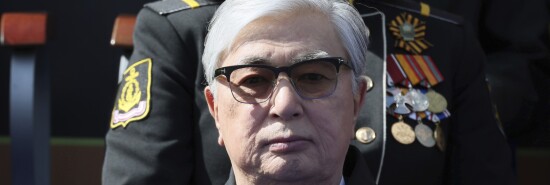
Kazakhstan is asserting its independence
Janusz Bugajski
Video Embed
During its invasion of Ukraine, Moscow prioritized sending its non-Russian nations to the front. Thousands of Buryats, Chechens, Bashkirs, and others were dispatched into the meat grinder. In a sign of growing desperation, Moscow is now trying to ship Cubans to the front lines and to recruit citizens of Kazakhstan in its faltering war.
This campaign has been condemned by the Kazakh authorities and demonstrates the growing distance between the two tentative allies. Kazakhstan serves as a primary example of how a country threatened by a revisionist neighbor is able to defend itself and consolidate its independence.
THE CRIMINALIZATION OF DISSENT CONTINUES
The foundations of national resilience were constructed in the initial three decades of statehood. Nursultan Nazarbayev, the country’s first president, laid the groundwork for independence in the early 1990s when Kazakhstan sovereignty was fragile. Under Nazarbayev, the country’s independence was built on four main pillars: strong institutions, a balanced foreign policy, economic growth based on foreign trade and investment, and the consolidation of national identity. The current president, Kassym-Jomart Tokayev, has accelerated this approach at a time when Russia is more unpredictable. When Tokayev meets President Joe Biden in New York on Sept. 19 for the high-level C5+1 confab with other Central Asian leaders, he will represent the leading regional power.
After independence, a dominant presidential system of government was established amid fears that a more decentralized parliamentary structure would be vulnerable to infiltration and disruption by Moscow, as witnessed in Ukraine. Kazakhstan adopted a balanced, multi-vector foreign policy, which in practice meant moving closer to the U.S. and European Union without triggering Russia’s aggression. Although Moscow claims that the West is driving a wedge between Russia and Kazakhstan, in reality Russia’s economic decline and increasing isolation have convinced Astana to broaden its Western connections.
The third pillar of independence is diversified foreign trade and investment. The country is becoming a major energy exporter to the West and an alternative transit route for products that bypass Russia through the Caspian Sea and the Caucasus. Kazakhstan is also the world’s largest uranium producer and a growing source of rare earth minerals. The U.S. has invested about $62 billion in Kazakhstan’s economy since independence and can benefit from the ongoing privatization of major state-owned companies. Congress is seeking to ban the import of Russian uranium to sever a crucial source of income for Moscow’s war in Ukraine. The U.S. previously imported 14% of its uranium from Russia and 35% from Kazakhstan. If the ban is approved, there will be a major increase in demand from Kazakhstan and a need for significant investments in local infrastructure.
The fourth and most important pillar of Kazakhstan’s independence is rebuilding its national identity after centuries of suppression by Tsarist and Soviet regimes. This has intensified in response to claims by Russian nationalists that after capturing Ukraine, Moscow should annex northern Kazakhstan, which they define as “southern Siberia” because ethnic Russians colonized this region over the centuries. In reality, while the Russian population is declining, Kazakhs are undergoing a demographic boom. The country’s population will reach 20 million in 2023, up from 15 million 20 years ago. Ethnic Kazakhs constitute more than 70% of the population, while Russians only number 15%, down from 38% when Kazakhstan gained statehood.
In a symbolic demonstration of de-Russification and territorial integrity, in 1998 Nazarbayev moved the country’s capital to Astana in northern Kazakhstan. The northern regions were developed to deter any claims from Moscow. In a major assertion of Kazakh identity, the Cyrillic script imposed by Moscow is being replaced with a Latin-based alphabet, a decision made by Nazarbayev in 2017 to strengthen Kazakh distinctiveness and move the country closer to the West. Paradoxically, Moscow’s threats are helping to consolidate Kazakhstan’s national identity and international connections as Russia’s influence in its former Central Asian empire is rapidly declining.
CLICK HERE TO READ MORE FROM THE WASHINGTON EXAMINER
Janusz Bugajski is a senior fellow at the Jamestown Foundation in Washington, D.C. His recent book is Failed State: A Guide to Russia’s Rupture. His forthcoming book is titled Pivotal Poland: Europe’s Rising Strategic Player.
